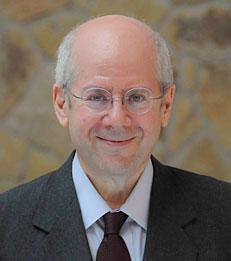Opinion
Managing risk and complexity: Legal entity identifier
—


In the absence of collective action, the risk is that the transition to a universal identifier system will stall.
By Kim Schoenholtz and Stephen Cecchetti
Prior to the Global Crisis, even an informed observer might have naïvely believed that the CEOs of big financial firms could simply push a button to view the current exposure of their firms to any other firms in the world. Or, if less technologically advanced, they could call their chief risk officers or chief financial officers to obtain end-of-day positions.
Not even close. By the time that Lehman failed in September 2008, large financial holding companies had evolved into extremely complex structures with hundreds or thousands of subsidiaries for which the parent companies lacked consolidated information technology and risk-management systems. This ill-informed state reflected the use of legacy systems following long histories of mergers, combined with legal manoeuvres to reduce tax liability and isolate losses in one part of a business from other parts. The multiplicity of information systems meant that different parts of the same firm employed varying names and codes to identify the same counterparty. In some cases, even the same division of a firm failed to consolidate systems (McKinsey & Company 2017). Fixing this, merging all of the information structures and ensuring consistency, would have been an expensive proposition that managers (compensated out of current profits) had an incentive to delay.
When Lehman Brothers Holdings collapsed in September 2008, it had as many as eight thousand subsidiaries operating across an array of jurisdictions around the globe.1 Not only that, but other large financial intermediaries had hundreds, and in some cases thousands of subsidiaries, as well. Figure 1 shows the number of subsidiaries of those US financial holding companies with the largest volume of assets at the end of 2016.
Read the full article as published by VoxEU.
___
Kim Schoenholtz is the Henry Kaufman Professor of the History of Financial Institutions and Markets in the Economics Department and Director of the Center for Global Economy and Business.
Not even close. By the time that Lehman failed in September 2008, large financial holding companies had evolved into extremely complex structures with hundreds or thousands of subsidiaries for which the parent companies lacked consolidated information technology and risk-management systems. This ill-informed state reflected the use of legacy systems following long histories of mergers, combined with legal manoeuvres to reduce tax liability and isolate losses in one part of a business from other parts. The multiplicity of information systems meant that different parts of the same firm employed varying names and codes to identify the same counterparty. In some cases, even the same division of a firm failed to consolidate systems (McKinsey & Company 2017). Fixing this, merging all of the information structures and ensuring consistency, would have been an expensive proposition that managers (compensated out of current profits) had an incentive to delay.
When Lehman Brothers Holdings collapsed in September 2008, it had as many as eight thousand subsidiaries operating across an array of jurisdictions around the globe.1 Not only that, but other large financial intermediaries had hundreds, and in some cases thousands of subsidiaries, as well. Figure 1 shows the number of subsidiaries of those US financial holding companies with the largest volume of assets at the end of 2016.
Read the full article as published by VoxEU.
___
Kim Schoenholtz is the Henry Kaufman Professor of the History of Financial Institutions and Markets in the Economics Department and Director of the Center for Global Economy and Business.
